
Bergen - The Gateway to the Fjords
Explore Bergen, Norway's Gateway to the Fjords, where history, culture, and breathtaking natural beauty converge in a city that promises an unforgettable experience.
Nestled between majestic mountains and the stunning fjords, Bergen is a city that captures the heart of every traveler. Known as the 'Gateway to the Fjords,' this picturesque city is Norway’s second-largest and boasts a rich history dating back to the Viking Age. Its charming old wharf, Bryggen, a UNESCO World Heritage site, is a testament to Bergen's storied past and maritime heritage. Wander through its narrow alleyways, lined with colorful wooden houses, and you'll feel like you've stepped back in time. Bergen is also a vibrant cultural hub. The city is home to a plethora of museums, galleries, and music festivals. The renowned Bergen International Festival, held annually, attracts artists and art lovers from around the world. The city's lively fish market, Torget, offers a taste of local life and cuisine. Here, you can sample fresh seafood or enjoy traditional Norwegian dishes while soaking in the bustling atmosphere. Nature lovers will find Bergen to be an ideal destination. Surrounded by seven mountains, the city offers numerous hiking trails with breathtaking views. The Fløibanen funicular takes you to the top of Mount Fløyen, where panoramic vistas of the city and surrounding fjords await. No visit to Bergen is complete without a boat trip through the fjords, where you'll witness some of the most stunning landscapes Norway has to offer.
Local tips in Bergen
- Bring waterproof clothing. Bergen is known for its frequent rain showers.
- Purchase a Bergen Card for free or discounted entry to museums and attractions.
- Visit the fish market early in the morning for the freshest seafood.
- Hike or take the Fløibanen funicular to Mount Fløyen for stunning city views.
- Explore Bryggen's alleyways to discover charming shops and cafes.
- Consider a fjord cruise to fully appreciate the natural beauty of the region.
Neighbourhoods in Bergen
Bergen - The Gateway to the Fjords
Nestled between majestic mountains and the stunning fjords, Bergen is a city that captures the heart of every traveler. Known as the 'Gateway to the Fjords,' this picturesque city is Norway’s second-largest and boasts a rich history dating back to the Viking Age. Its charming old wharf, Bryggen, a UNESCO World Heritage site, is a testament to Bergen's storied past and maritime heritage. Wander through its narrow alleyways, lined with colorful wooden houses, and you'll feel like you've stepped back in time. Bergen is also a vibrant cultural hub. The city is home to a plethora of museums, galleries, and music festivals. The renowned Bergen International Festival, held annually, attracts artists and art lovers from around the world. The city's lively fish market, Torget, offers a taste of local life and cuisine. Here, you can sample fresh seafood or enjoy traditional Norwegian dishes while soaking in the bustling atmosphere. Nature lovers will find Bergen to be an ideal destination. Surrounded by seven mountains, the city offers numerous hiking trails with breathtaking views. The Fløibanen funicular takes you to the top of Mount Fløyen, where panoramic vistas of the city and surrounding fjords await. No visit to Bergen is complete without a boat trip through the fjords, where you'll witness some of the most stunning landscapes Norway has to offer.
When is the best time to go to Bergen?
Iconic landmarks you can’t miss
Bergenhus Fortress
Discover Bergenhus Fortress, a historical gem showcasing Norway's rich heritage with stunning architecture, beautiful gardens, and captivating museums.
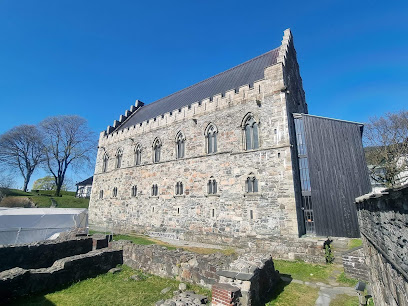
Fløibanen - mountain cable car
Discover Bergen's breathtaking views from the Fløibanen Mountain Cable Car, an iconic journey to the summit of Mount Fløyen.
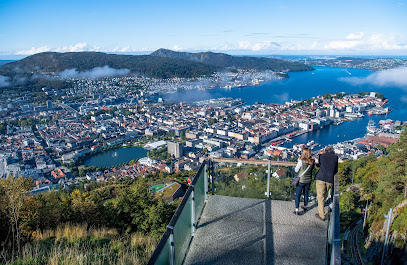
Bryggen
Experience the historical allure of Bryggen, Bergen's UNESCO World Heritage site, where colorful architecture and rich maritime history await.
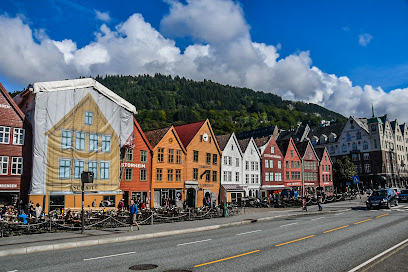
Fantoft Stave Church
Explore the enchanting Fantoft Stave Church, a stunning example of Norway's medieval architecture nestled in the scenic landscapes of Bergen.
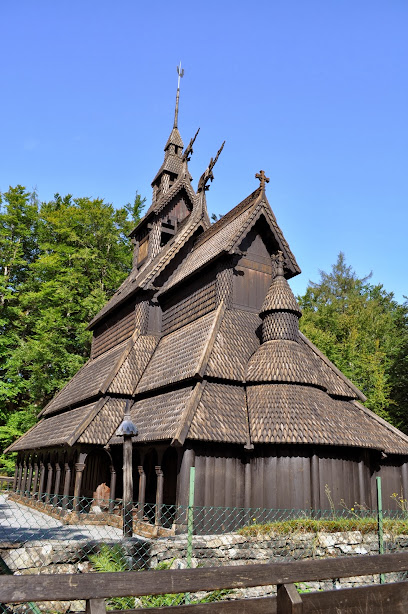
Bryggen Hansa Quarter
Explore the UNESCO World Heritage Site of Bryggen Hansa Quarter, a cultural treasure trove of colorful wooden buildings and rich maritime history in Bergen.
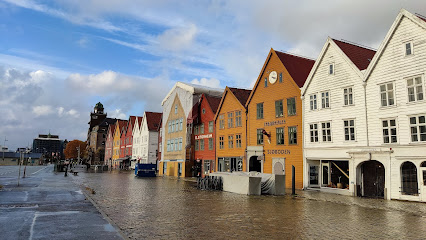
Festplassen
Discover the charm of Festplassen, a vibrant square in Bergen, Norway, perfect for relaxation, cultural events, and exploring local heritage.
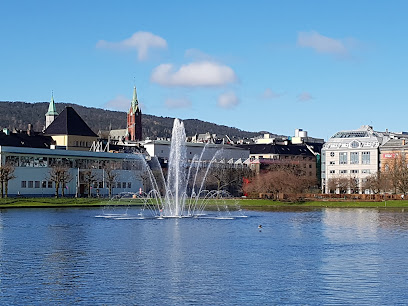
Tourist Information in Bergen
Explore Bergen with ease at the Tourist Information Center, your ultimate guide to Norway's stunning landscapes and rich cultural heritage.

Magic Ice Bar
Magic Ice Bar in Bergen offers a unique experience with stunning ice sculptures and creative cocktails, perfect for art and drink lovers.
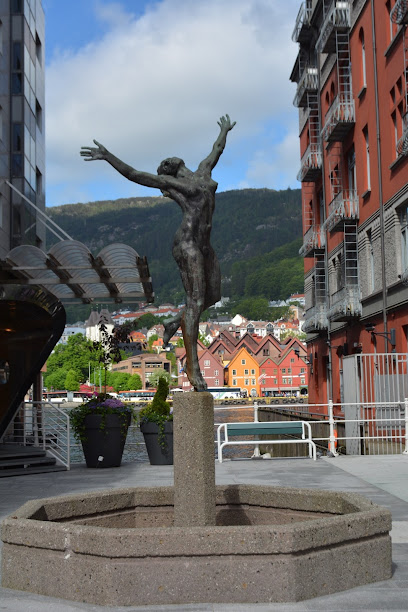
Gamlehaugen
Explore the rich history and stunning landscapes at Gamlehaugen, Norway's royal museum set in the picturesque Paradis region.
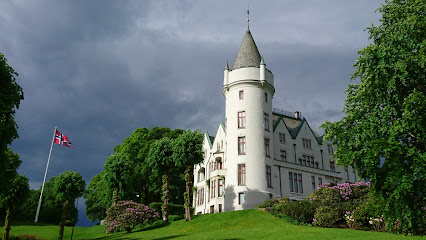
Bergen Maritime Museum
Discover Norway's rich maritime history at the Bergen Maritime Museum, showcasing artifacts and stories from seafaring adventures.
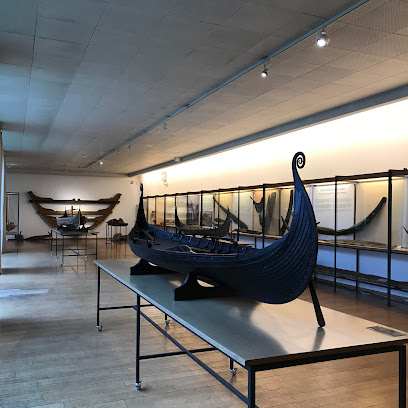
Norway Fisheries Museum
Explore Norway's maritime legacy at the Norway Fisheries Museum, showcasing the history and culture of fishing in Bergen and beyond.
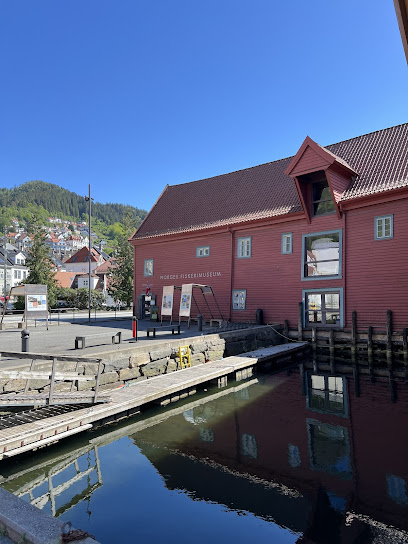
Bryggens Museum
Explore Bergen's rich history at Bryggens Museum, where artifacts and stories reveal the city's captivating past.
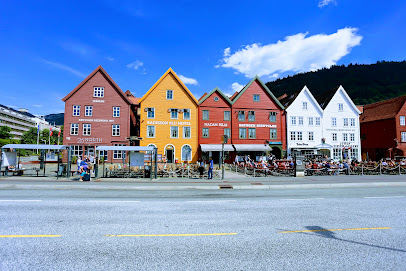
Bergen Cathedral
Discover the medieval charm and historical significance of Bergen Cathedral, a stunning architectural masterpiece in the heart of Bergen, Norway.
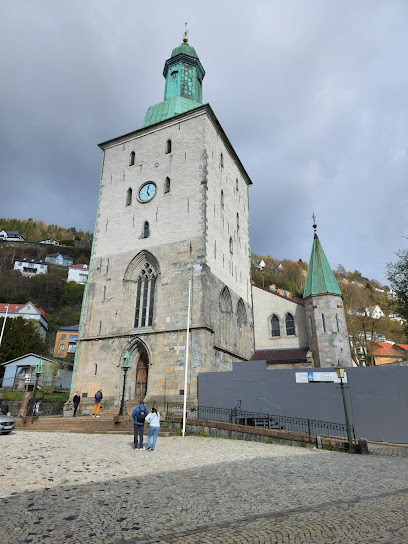
St. Mary's Church
Discover the serene beauty and rich history of St. Mary's Church, a cherished Lutheran landmark in the heart of Bergen, Norway.

Go Fjords
Discover the stunning beauty of Norway's fjords with Go Fjords, your premier tour operator for breathtaking experiences in Bergen.
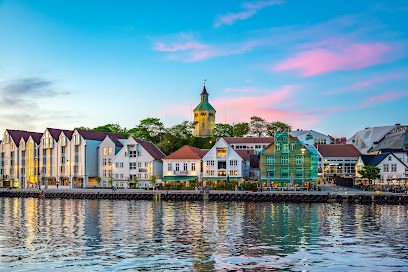
Unmissable attractions to see
Fishmarket in Bergen
Discover the vibrant flavors of Bergen at the Fishmarket, where fresh seafood meets rich maritime tradition in a lively atmosphere.
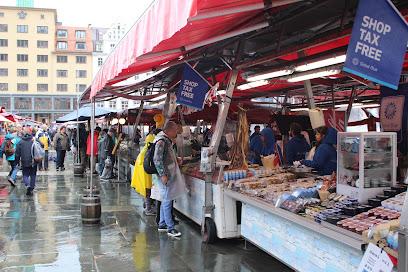
Steinsdalsfossen
Experience the breathtaking beauty of Steinsdalsfossen, where you can walk behind the waterfall and enjoy stunning views of Norway's nature.
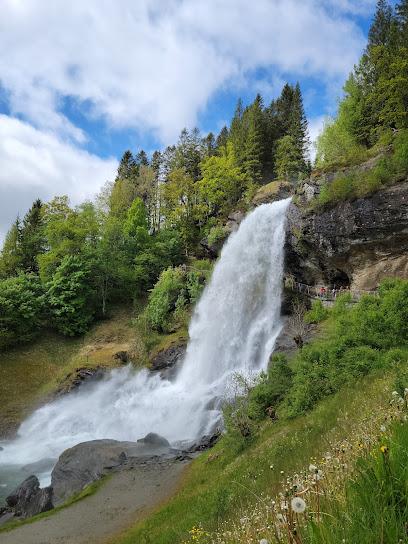
Akvariet i Bergen - The National Aquarium
Explore the underwater world at Akvariet i Bergen, Norway's National Aquarium, home to diverse marine life and engaging educational exhibits.

Fløibanen - Funicular Railway
Discover Bergen's beauty from above with a scenic ride on the Fløibanen Funicular Railway, leading to stunning views and outdoor adventures.
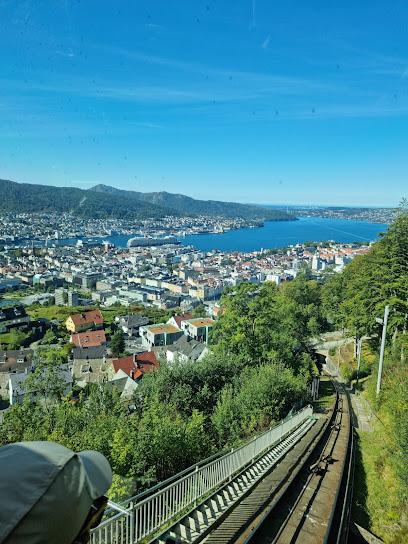
Ulriksbanen
Discover the enchanting views and adventures waiting for you at Ulriksbanen, Bergen's iconic mountain cable car and dining experience.
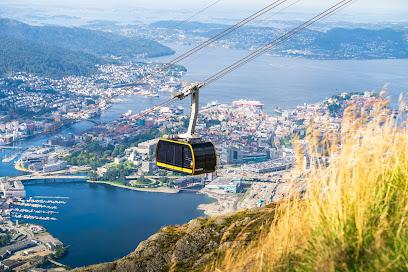
Bryggen
Discover Bryggen in Bergen, Norway: A UNESCO World Heritage site celebrating rich history, breathtaking architecture, and vibrant local culture.
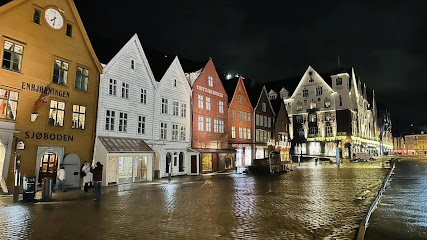
Grieghallen
Discover the vibrant cultural hub of Bergen at Grieghallen, a stunning concert hall offering diverse performances and a rich artistic legacy.
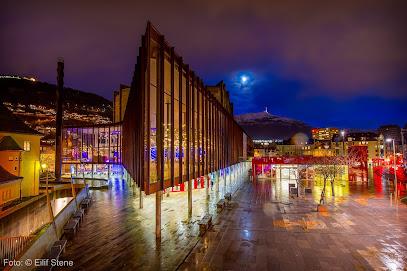
Fantoft Stave Church
Explore Fantoft Stave Church, a masterpiece of medieval architecture set in the scenic landscapes of Bergen, showcasing Norway's rich heritage.
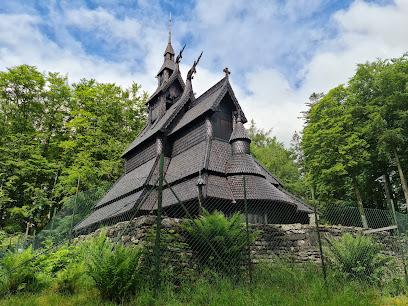
Festplassen
Experience the heart of Bergen at Festplassen, a vibrant square filled with local culture, scenic views, and engaging activities for tourists.
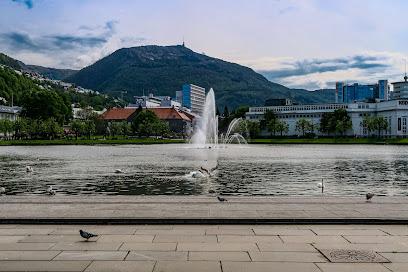
VilVite - Bergen Science Center
Discover the interactive world of science at VilVite - Bergen Science Center, where learning meets fun for all ages in the heart of Bergen.
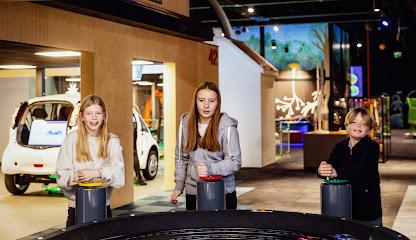
Troldhaugen
Explore Troldhaugen, the enchanting home of Edvard Grieg, where music and nature blend beautifully in Paradis, Norway.
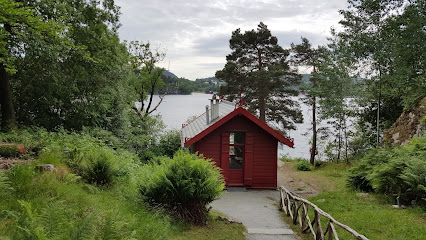
USF
Discover the vibrant cultural scene at USF in Bergen, Norway - a hub for art, music, and cinematic experiences.
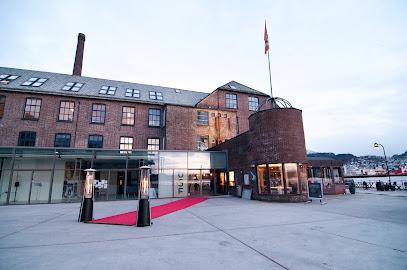
Gamle Bergen Museum - Bymuseet i Bergen
Explore Gamle Bergen Museum, an open-air museum showcasing Bergen's rich cultural history with stunning wooden architecture and engaging exhibits.
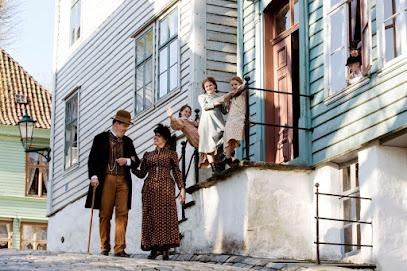
St. John's Church
Explore the neo-Gothic beauty of St. John's Church in Bergen, a serene sanctuary adorned with stunning stained glass and rich history.
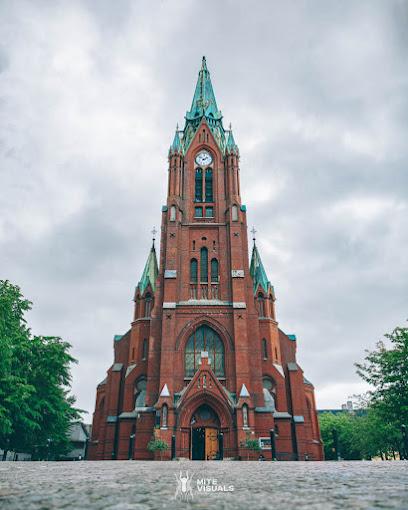
The National Stage
Experience the vibrant culture of Bergen at The National Stage, a premier performing arts theater showcasing local and international talent.
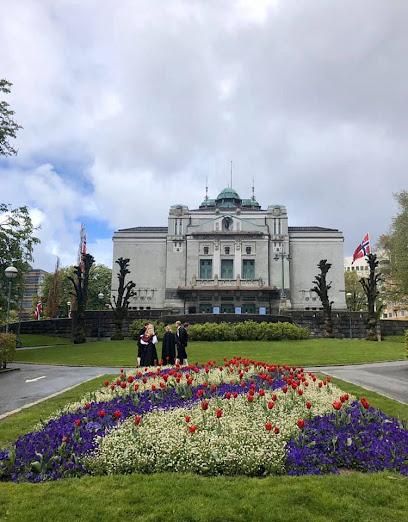
Essential places to dine
AS Bryggestuen - Bryggeloftet
Experience Bergen's culinary delights at AS Bryggestuen - Bryggeloftet, where fresh seafood meets traditional Norwegian hospitality.
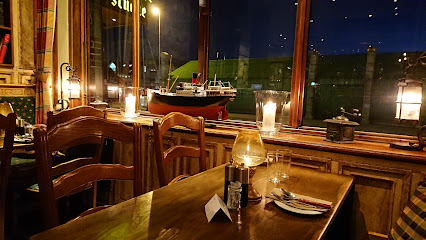
Olivia Zachariasbryggen
Experience authentic Italian cuisine at Olivia Zachariasbryggen in Bergen, where every dish tells a story of tradition and flavor.
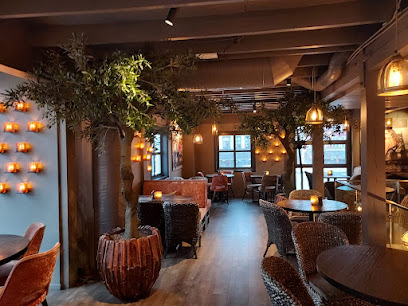
Pingvinen
Discover authentic Norwegian flavors at Pingvinen, Bergen's premier gastropub offering traditional dishes and local brews.
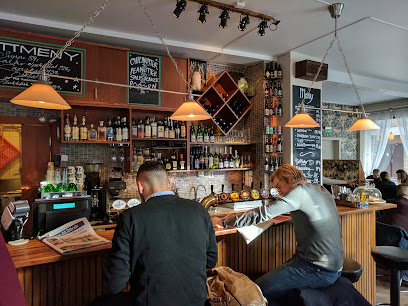
Brasilia Bergen
Savor authentic Brazilian cuisine at Brasilia Bergen - where vibrant flavors meet Norwegian hospitality.
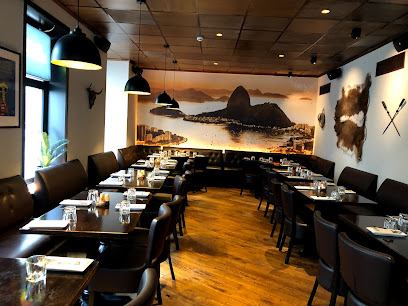
Fish Me Fishmarket
Experience Bergen's finest seafood at Fish Me Fishmarket - where freshness meets tradition in every delicious bite.

Trekroneren
Discover Trekroneren in Bergen - home to unique gourmet hot dogs including reindeer delights amidst a vibrant local atmosphere.
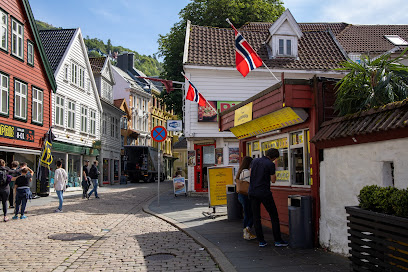
Fjellskål Sjømatrestaurant
Discover culinary excellence at Fjellskål Sjømatrestaurant – Bergen's premier destination for fresh seafood and breathtaking harbor views.
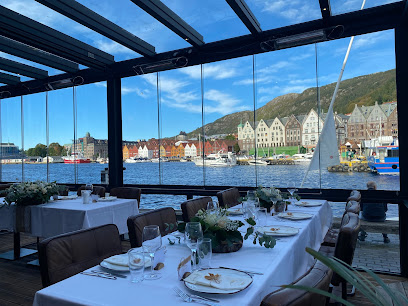
Café Opera
Experience the best of Bergen at Café Opera - where exquisite cuisine meets vibrant nightlife and live music.
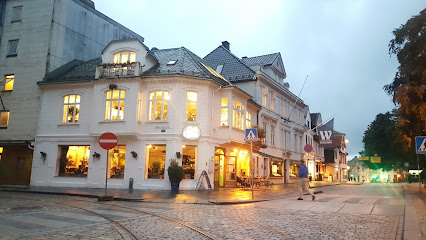
Cartel's Latin American Kitchen & Bar (Bergen Sentrum)
Experience vibrant Latin American cuisine and cocktails at Cartel's Kitchen & Bar in Bergen Sentrum – a must-visit for food lovers.
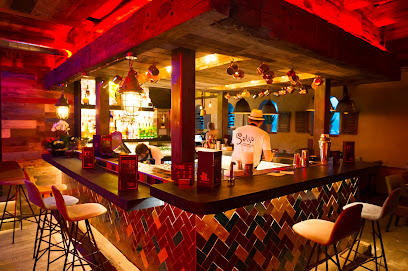
Royal
Discover Bergen's culinary gem at Royal, where gourmet burgers meet exceptional taste in a vibrant setting.
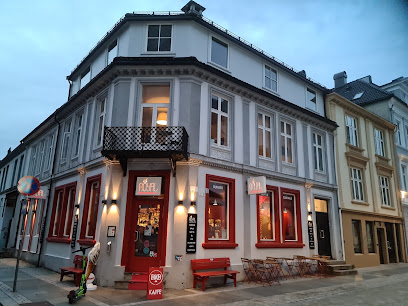
The Dining Hook
Discover Bergen's finest seafood at The Dining Hook - where fresh flavors meet Norwegian tradition.
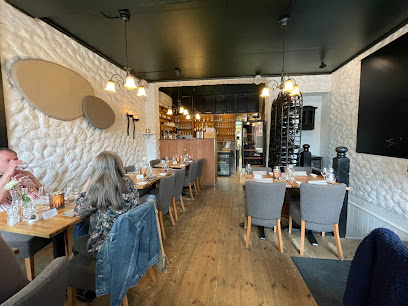
Bjerck Restaurant & Bar
Discover Bjerck Restaurant & Bar in Bergen: where modern cuisine meets vibrant atmosphere for unforgettable dining experiences.
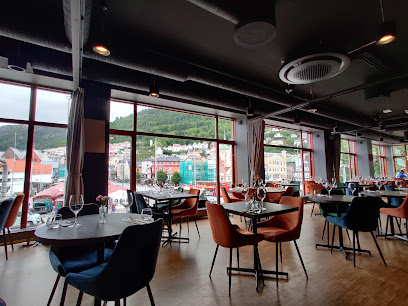
The Unicorn Fish Restaurant
Discover exquisite seafood at The Unicorn Fish Restaurant, where fresh catches meet Norwegian culinary traditions amidst stunning waterfront views.
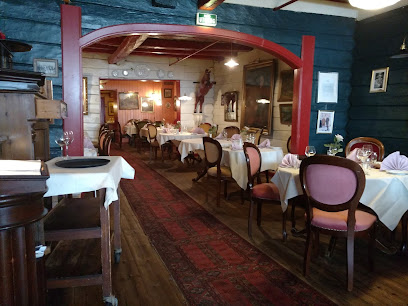
Harbour Café
Experience delicious American cuisine with a Norwegian twist at Harbour Café in Bergen's scenic harbor—perfect for food lovers and travelers alike.
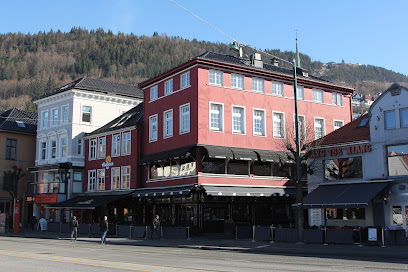
Big Horn Steakhouse Bergen
Discover culinary excellence at Big Horn Steakhouse Bergen – where premium steaks meet exceptional service in a vibrant atmosphere.
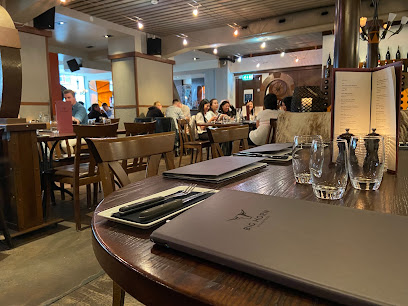
Markets, malls and hidden boutiques
Bergen Storsenter
Explore Bergen Storsenter: Your ultimate shopping destination in Bergen, featuring a diverse range of stores and delicious dining options.
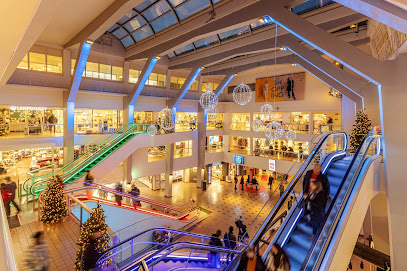
Galleriet
Discover Galleriet in Bergen: A shopper's paradise with diverse stores, delectable dining, and a vibrant atmosphere for every visitor.
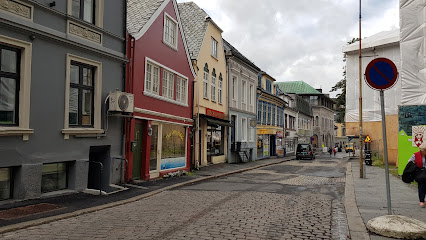
Xhibition Shopping Center
Discover the ultimate shopping experience at Xhibition Shopping Center in Bergen, where fashion meets fun in a vibrant atmosphere.
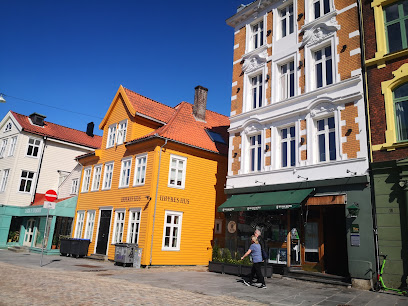
Outland Bergen
Explore a vibrant comic book and gaming paradise in Bergen, with a vast selection of comics, board games, toys, and trading cards.
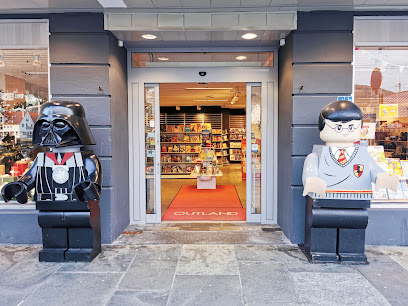
Illums Bolighus
Explore the essence of Scandinavian design at Illums Bolighus in Bergen, your ultimate destination for unique home goods and fashion.
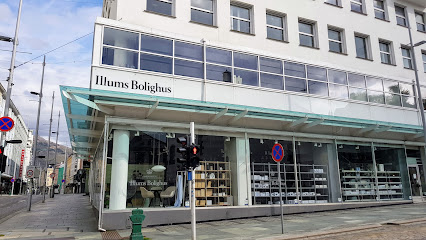
Julehuset
Discover the festive charm of Julehuset in Bergen, Norway's ultimate Christmas store filled with unique decorations and souvenirs.
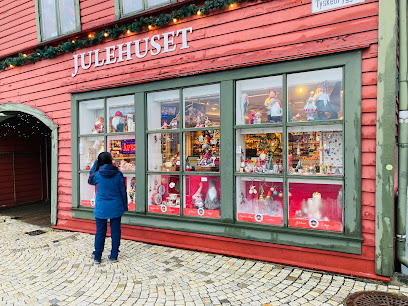
Chillout Bergen
Explore Chillout Bergen: A perfect blend of luggage, books, and camping gear for your Norwegian adventures.
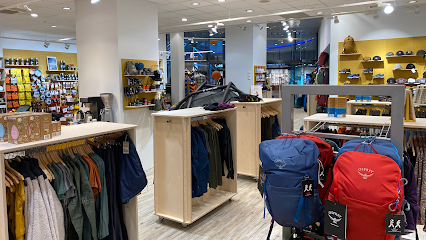
Nilssen Bryggen - Gifts, Souvenirs, Jackets
Discover authentic Norwegian gifts and stylish apparel at Nilssen Bryggen, your go-to souvenir store in the heart of Bergen.
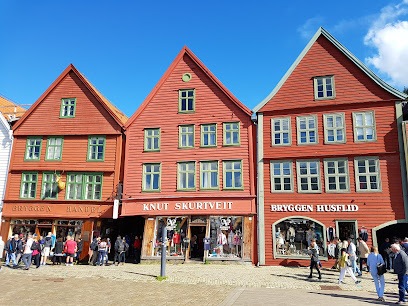
Høyer
Discover the latest in fashion at Høyer, Bergen's premier clothing store featuring a blend of local and international styles.
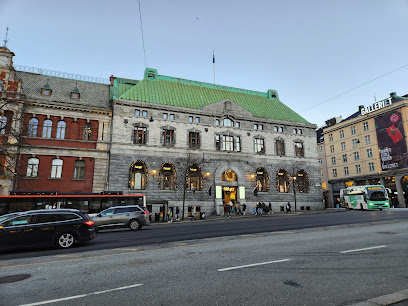
Susan Fosse
Discover stylish fashion at Susan Fosse, a premier clothing store in the heart of Bergen, perfect for enhancing your wardrobe with local elegance.
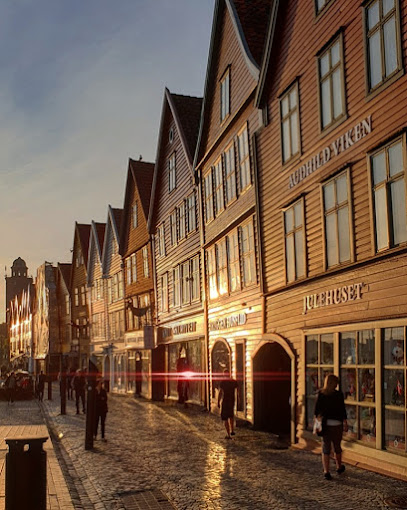
Retro Bergen AS
Explore the latest fashion trends at Retro Bergen AS, a stylish clothing store in the heart of Bergen's vibrant Sentrum district.
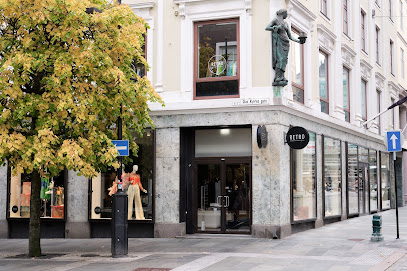
Ting Bergen
Explore Ting Bergen: Your destination for unique Nordic gifts and home goods in the heart of Bergen, Norway.

BIK BOK
Explore BIK BOK in Bergen - a stylish women's clothing store offering trendy apparel at affordable prices in the heart of Norway's beautiful city.
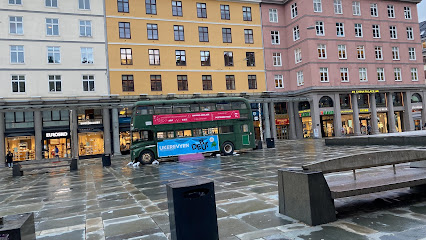
Flying Tiger Copenhagen
Explore the vibrant and whimsical world of Flying Tiger Copenhagen in Bergen, where unique gifts and quirky finds await every visitor.
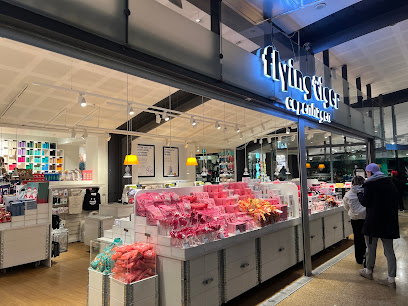
Heim Bryggen AS
Explore the charm of Heim Bryggen AS, a unique gift shop in Bergen offering clothing, home goods, and local treasures that reflect Norwegian culture.

Essential bars & hidden hideouts
Apollon Platebar
Experience the vibrant energy of Apollon Platebar, where craft beer meets the rhythm of music in the heart of Bergen.
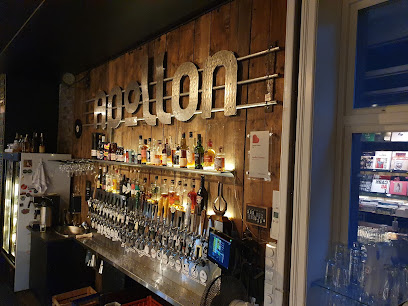
No Stress Bergen
Experience the vibrant nightlife of Bergen at No Stress Bergen, where great drinks and a welcoming atmosphere await every visitor.
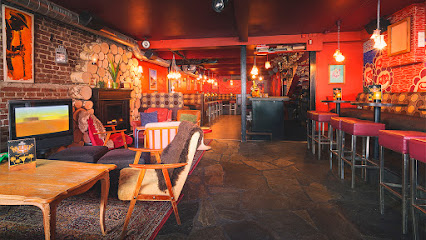
Magic Ice Bar
Discover the Magic Ice Bar in Bergen - a captivating blend of stunning ice art and lively atmosphere, perfect for a unique night out.
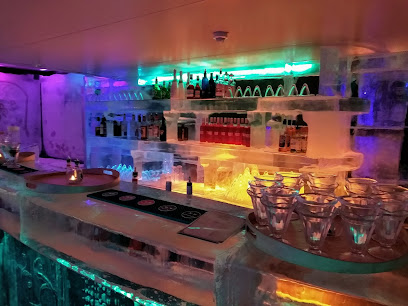
Vinyl - Plater & øl
Experience the rhythmic charm of Vinyl - Plater & øl, where great beers meet the magic of vinyl records in Bergen.
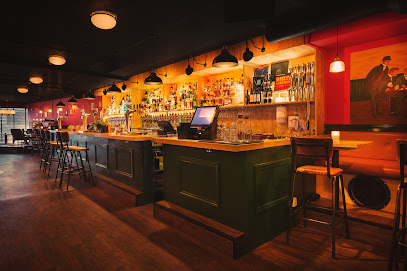
Skipperstuen
Discover Skipperstuen, a cozy and vibrant pub in the heart of Bergen, perfect for enjoying local brews and a friendly atmosphere.
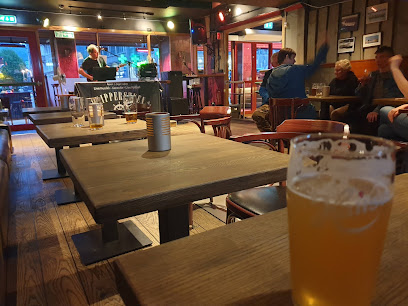
The Library Bar
Experience the enchanting nightlife at The Library Bar in Bergen, where cocktails and culture blend seamlessly for an unforgettable evening.
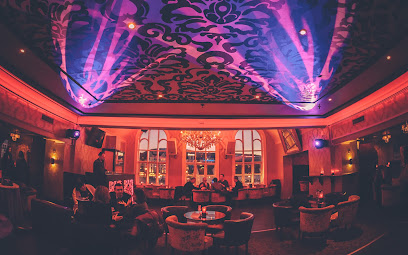
LAST monkey
Experience the vibrant nightlife of Bergen at LAST Monkey, a cocktail bar known for its creative drinks and lively atmosphere.
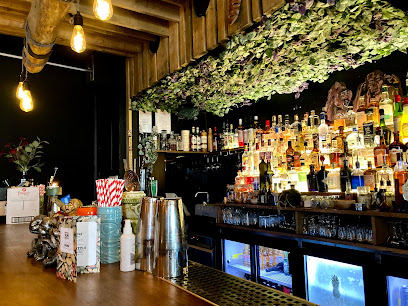
Dark & Stormy
Discover the lively nightlife at Dark & Stormy Bar in Bergen, where creative cocktails meet a vibrant atmosphere, perfect for socializing.
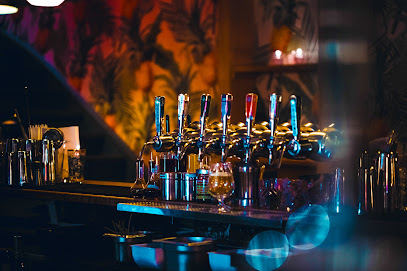
Frille og Dyvekes Vinkjeller
Discover the charm of Frille og Dyvekes Vinkjeller, Bergen's enchanting wine bar featuring an exquisite selection of wines in a cozy ambiance.

MagdaBar
Experience the vibrant cocktail culture at MagdaBar in Bergen, where expertly crafted drinks meet a lively atmosphere perfect for socializing.
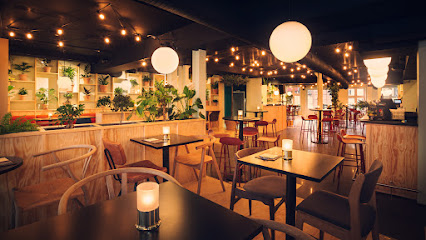
Lille Bar & Lounge
Discover the vibrant nightlife at Lille Bar & Lounge, a cocktail bar in Bergen known for its lively atmosphere and extensive drink menu.
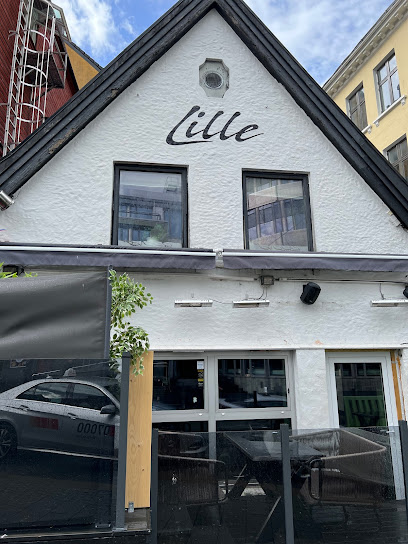
Muskedunder
Experience Bergen's nightlife at Muskedunder, a lively bar known for its creative cocktails and vibrant atmosphere in the heart of the city.
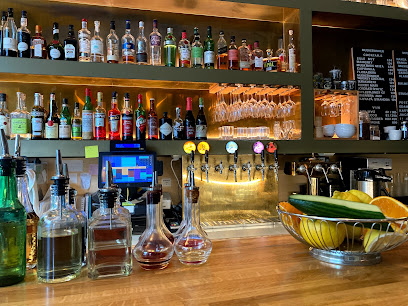
Lampemannen Bar
Discover the vibrant charm of Lampemannen Bar in Bergen, where delightful drinks and a welcoming atmosphere await.
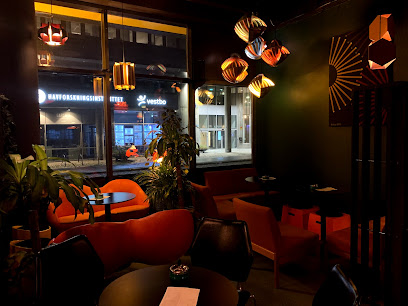
Baklommen bar
Discover Baklommen Bar in Bergen: A vibrant bar offering a delightful mix of cocktails, local spirits, and an unforgettable atmosphere.
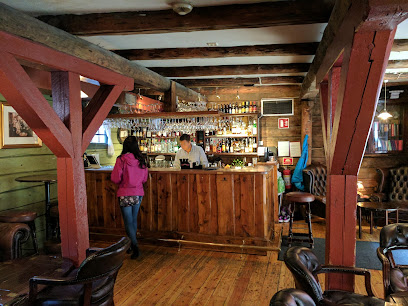
Utidi Bar
Experience Bergen's nightlife at Utidi Bar, where cozy ambiance meets an extensive drink menu tailored for every taste.
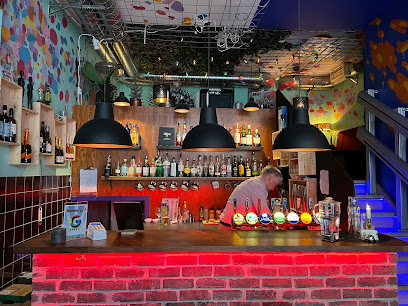
Local Phrases
-
- HelloHei
[hay] - GoodbyeHa det
[hah deh] - YesJa
[yah] - NoNei
[nay] - Please/You're welcomeVær så god
[ver so goh] - Thank youTakk
[tahk] - Excuse me/SorryUnnskyld
[oon-shuld] - How are you?Hvordan har du det?
[vor-dan har doo deh] - Fine. And you?Fint. Og du?
[feent. oh doo] - Do you speak English?Snakker du engelsk?
[snah-ker doo engelsk] - I don't understandJeg forstår ikke
[yay for-stor eek-keh]
- HelloHei
-
- I'd like to see the menu, pleaseJeg vil gjerne se menyen, takk
[yay vil gern-eh seh mehn-yen, tahk] - I don't eat meatJeg spiser ikke kjøtt
[yay spee-ser eek-keh shøtt] - Cheers!Skål!
[skohl] - I would like to pay, pleaseJeg vil gjerne betale, takk
[yay vil gern-eh beh-tah-leh, tahk]
- I'd like to see the menu, pleaseJeg vil gjerne se menyen, takk
-
- Help!Hjelp!
[yel-p] - Go away!Gå bort!
[goh bohrt] - Call the Police!Ring politiet!
[ring po-leet-yet] - Call a doctor!Ring en lege!
[ring en leh-geh] - I'm lostJeg er borte
[yay er bohr-teh] - I'm illJeg er syk
[yay er seek]
- Help!Hjelp!
-
- I'd like to buy...Jeg vil kjøpe...
[yay vil shø-peh] - I'm just lookingJeg bare ser
[yay bah-reh sehr] - How much is it?Hvor mye koster det?
[vor myeh kus-ter deh] - That's too expensiveDet er for dyrt
[deh er for deert] - Can you lower the price?Kan du senke prisen?
[kan doo sen-keh pree-sen]
- I'd like to buy...Jeg vil kjøpe...
-
- What time is it?Hva er klokken?
[vah er klok-ken] - It's one o'clockKlokken er ett
[klok-ken er eht] - Half past (10)Halv ti
[halv tee] - MorningMorgen
[mohr-gen] - AfternoonEttermiddag
[et-ter-mee-dahg] - EveningKveld
[kveld] - YesterdayI går
[ee gohr] - TodayI dag
[ee dahg] - TomorrowI morgen
[ee mohr-gen] - 1En
[en] - 2To
[too] - 3Tre
[treh] - 4Fire
[fee-reh] - 5Fem
[fem] - 6Seks
[sehks] - 7Syv
[seev] - 8Åtte
[oh-teh] - 9Ni
[nee] - 10Ti
[tee]
- What time is it?Hva er klokken?
-
- Where's a/the...?Hvor er en/et...?
[vor er en/et] - What's the address?Hva er adressen?
[vah er ah-dress-en] - Can you show me (on the map)?Kan du vise meg (på kartet)?
[kan doo vee-seh meh (poh kahr-teh)] - When's the next (bus)?Når går neste (buss)?
[nahr gohr neh-steh (boos)] - A ticket (to ....)En billett (til ....)
[en bee-let (teel)]
- Where's a/the...?Hvor er en/et...?
History of Bergen
-
Bergen's association with the Hanseatic League is a defining chapter in its history. During the 14th to mid-16th centuries, Bergen was a key trading hub for the Hanseatic merchants from Germany. The Bryggen wharf, a UNESCO World Heritage site, stands as a testament to this period. The colorful wooden buildings, reconstructed after successive fires, once housed offices, warehouses, and homes of these merchants. This area offers a glimpse into the daily life and operations of the medieval trading empire that played a pivotal role in shaping the city's economic and cultural landscape.
-
The Great Fire of 1702 is one of the most catastrophic events in Bergen's history. The fire destroyed nearly 90% of the city, including many of the wooden structures. This disaster necessitated a massive rebuilding effort, and the subsequent architectural developments have significantly influenced Bergen's urban landscape. The reconstruction brought in new building regulations that aimed to prevent such widespread devastation in the future.
-
Bergenhus Fortress is one of Norway's oldest and best-preserved castles, with roots tracing back to the 1240s. The fortress played a crucial role in the defense of the city and has been a royal residence. Key structures within the fortress include Haakon's Hall, built by King Haakon IV in the 13th century, and the Rosenkrantz Tower, which dates back to the 16th century. These buildings are emblematic of Norway’s medieval history and Bergen’s significance as a political and military center.
-
The Black Death reached Bergen in 1349, arriving on a ship from England. The pandemic had a devastating impact on the city’s population and economic activities. Bergen, like many other European cities, suffered immense loss of life, which caused significant social and economic disruptions. The Black Death also led to changes in the city's labor market and social structure, effects that would be felt for generations.
-
The 19th century saw a cultural renaissance in Bergen, spearheaded by the violin virtuoso Ole Bull. Born in Bergen, Bull became an international sensation and used his influence to promote Norwegian culture. He founded the Norwegian Theatre in Bergen in 1849, which became a platform for showcasing Norwegian playwrights and actors. His efforts were instrumental in fostering a sense of national identity and cultural pride during a period of burgeoning Norwegian nationalism.
-
Edvard Grieg, one of Norway's most famous composers, was born in Bergen in 1843. Grieg's music, inspired by Norwegian folk tunes, played a significant role in the national romantic movement. His home, Troldhaugen, situated on the outskirts of Bergen, is now a museum dedicated to his life and work. Troldhaugen includes his villa, a concert hall, and his gravesite. Visitors can explore the serene surroundings that inspired much of his music, making it a vital cultural landmark in Bergen.
-
Established in 1953, the Bergen International Festival is one of Norway’s premier cultural events. Held annually in late May and early June, the festival showcases a diverse array of performances, including music, theater, dance, and opera. It attracts artists from around the world and celebrates both international and Norwegian culture. The festival is a reflection of Bergen’s ongoing commitment to arts and culture, drawing thousands of visitors to the city each year.
-
During World War II, Bergen was occupied by Nazi Germany from 1940 to 1945. The city’s strategic location and port facilities made it a key military target. Bergen experienced several bombings, including a significant attack on the harbor in 1944, which caused extensive damage and loss of life. The occupation period left a lasting impact on Bergen, with remnants of wartime fortifications and bunkers still visible in and around the city.
Bergen Essentials
-
Bergen is well-connected by air, sea, and land. The Bergen Airport, Flesland (BGO), is the primary gateway, with direct flights from major European cities. The airport is about 20 kilometers from the city center and is accessible by airport buses, taxis, or the Bergen Light Rail (Bybanen). For a scenic arrival, consider taking a ferry or a cruise ship to Bergen's harbor. Bergen is also accessible by train via the Bergen Line, which connects to Oslo and offers breathtaking views of the Norwegian landscape.
-
Bergen's public transport system includes buses, light rail (Bybanen), and ferries. The Bybanen light rail is a convenient way to travel between the city center and the airport, as well as other suburbs. Buses cover most parts of the city and are operated by Skyss. Taxis are available but can be expensive. For a more flexible option, consider renting a car; however, be aware of parking restrictions and fees. Bergen is also a walkable city, and many attractions are within easy walking distance of each other.
-
The official currency in Norway is the Norwegian Krone (NOK). Credit and debit cards are widely accepted, even for small purchases. Contactless payments are also common. ATMs (called 'Minibank' in Norwegian) are available throughout the city. While cash is less frequently used, it's advisable to carry a small amount for emergencies or in situations where cards might not be accepted, such as some small kiosks or local markets.
-
Bergen is generally a safe city for tourists. However, as with any urban area, it's important to stay vigilant. Avoid leaving your belongings unattended and be cautious in crowded places, particularly at the Fish Market and Bryggen area. While Bergen does not have high-crime neighborhoods specifically targeting tourists, it's always wise to avoid poorly lit areas at night. Petty crimes like pickpocketing can occur, so keep your valuables secure.
-
In case of an emergency, dial 112 for police, 113 for medical assistance, and 110 for fire services. English is widely spoken, so communication should not be an issue. Bergen has several hospitals and clinics, with Haukeland University Hospital being the largest. Pharmacies are available throughout the city for minor health issues. It is advisable to have travel insurance that covers medical emergencies.
-
Fashion: Do wear layers and be prepared for changing weather conditions. Don't wear overly casual attire in fine dining restaurants. Religion: Do respect local customs. While Norway is largely secular, respect is appreciated in places of worship. Public Transport: Do validate your ticket before boarding and offer your seat to elderly passengers. Don't talk loudly or disturb others. Greetings: Do greet people with a handshake and maintain eye contact. Norwegians appreciate personal space. Eating & Drinking: Do try local dishes like fish soup and 'rakfisk'. Don't leave a large tip; service charges are usually included.
-
To experience Bergen like a local, visit the local fish market for fresh seafood and local delicacies. Take a hike up one of the seven mountains surrounding the city, such as Fløyen or Ulriken, for panoramic views. Explore the lesser-known alleys of Bryggen for unique shops and history. Attend a local event or concert to mingle with locals. For a quieter experience, visit the Arboretum and Botanical Garden at Milde, which offers beautiful landscapes and a peaceful setting.
Trending Landmark in Bergen
Nearby Cities to Bergen
-
Things To Do in Stavanger
-
Things To Do in Ålesund
-
Things To Do in Molde
-
Things To Do in Kristiansand
-
Things To Do in Oslo
-
Things To Do in Fredrikstad
-
Things To Do in Skagen
-
Things To Do in Trondheim
-
Things To Do in Frederikshavn
-
Things To Do in Aalborg
-
Things To Do in Karlstad
-
Things To Do in Gothenburg
-
Things To Do in Viborg
-
Things To Do in Randers
-
Things To Do in Herning

















